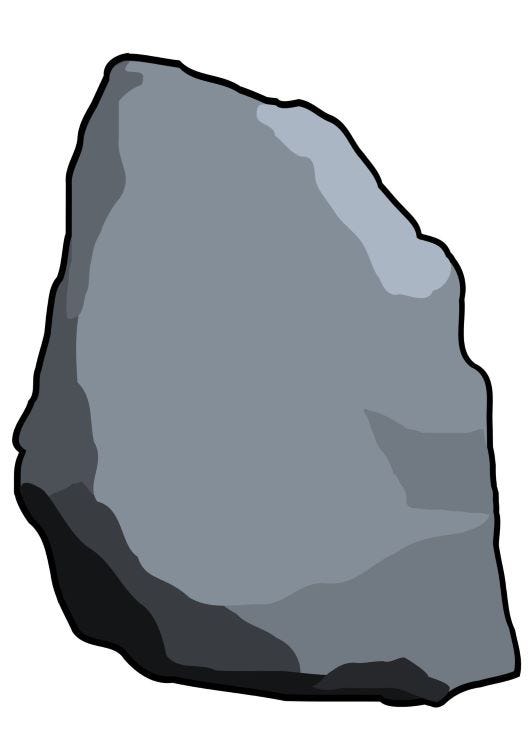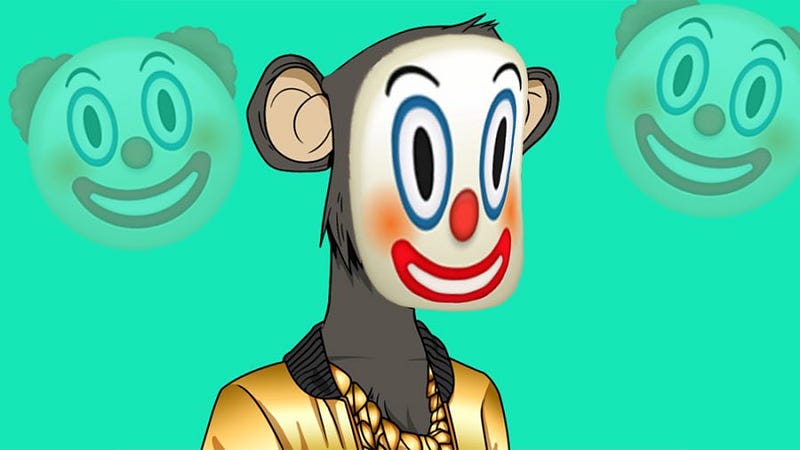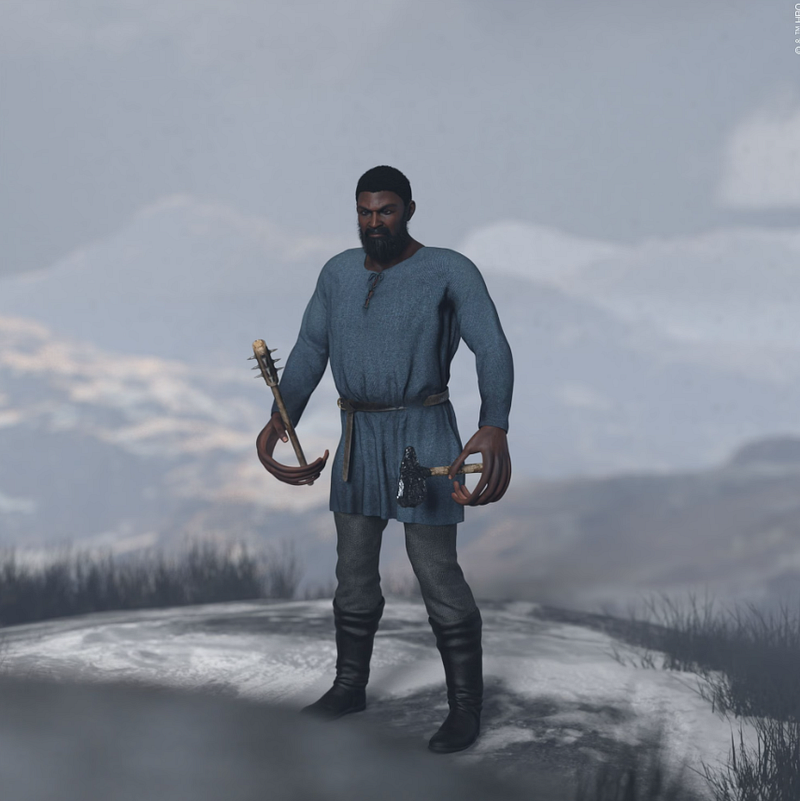A Deep Dive into the NFT Downfall: What Went Wrong?
Written on
The world of Non-Fungible Tokens (NFTs) was once filled with excitement and promise. Corporations were acquiring them for their art collections, renowned auction houses like Christie's were hosting vibrant sales, and the gaming industry viewed NFTs as a revolutionary form of downloadable content. High-end brands like Tiffany & Co. even launched their own NFT collections, while celebrities joined the fray, creating and promoting their digital art. It appeared that nothing could halt this booming trend.

However, the arrival of a character known as Kevin, part of the Pixelmon collection, marked a significant shift in perception. Initially envisioned as a groundbreaking NFT akin to Pokémon, it quickly devolved into a source of laughter across social media as the absurdity of the Pixelmon collection unfolded. For those who invested their hard-earned money into minting a Kevin or any similarly poorly crafted digital asset, this was a painful turning point. People began to reassess the promises made by NFT projects, which often fell drastically short of their ambitious claims.
Reflecting on the past, digital artists had long been underappreciated, with little value ascribed to their work—often dismissed as mere screensavers or profile pictures. Yet this perception shifted dramatically. The traditional art market is notoriously competitive, leaving many artists struggling to gain visibility among potential buyers. NFTs presented a promising solution, offering fair compensation, recognition, the option for anonymity, and immediate access to a vast marketplace. For many creators, this new landscape seemed tailor-made to help digital art attain the value it deserved and enable artists to make a living from their creations. We had already accepted that digital goods—like songs on iTunes or movies on Netflix—held worth. Now it was time for artists to reap similar benefits.
As the NFT craze intensified, however, quality was sacrificed for quantity. Following the success of Yuga Labs' Bored Apes, a flood of digital animals—cats, dogs, horses, and even digital rocks—entered the market. The absurdity reached new heights, with someone managing to sell a digital rock for a price equivalent to a house.

The NFT landscape was chaotic, with endorsements from celebrities ranging from high-profile figures like Kim Kardashian to lesser-known personalities. Unlike traditional consumer products pushed by influencers, these NFTs promised returns on investment (ROI). This wasn't just another caffeinated energy drink or vegan lipstick; these NFTs were marketed as investments poised to outshine the Bored Apes.
When lesser-known artists and influencers began promoting poorly designed digital creations, the market's integrity was put to the test. The bubble burst in 2021, leaving many who had invested in the dream of appreciating assets disheartened as values plummeted by 99% or more. Items once worth a fortune became virtually worthless, exposing the industry's deceptive facade.

Stephen Findeisen, known online as CoffeeZilla, recently highlighted the infamous NFT project CryptoZoo in a revealing YouTube series. His investigative work shed light on questionable business practices surrounding Logan Paul's venture into NFTs. Logan's reputation for promoting NFTs is tainted by numerous public failures, with CryptoZoo being the latest example of a poorly executed project.
Other projects were similarly backed by a cadre of influencers, preying on the unsuspecting public who trusted their recommendations. Why would celebrities risk their reputations promoting something doomed to fail? They encouraged fans to invest, branding it as a chance for collective wealth and community building.
So, let’s meet Logan's much-hyped NFT: Dink Doink.

This chaotic creation was marketed as the next big thing, with a near-ironclad guarantee of success. To clarify, it was definitely not a rip-off of South Park. Dink Doink was unveiled to the public alongside its token, $DinkDoink. While it may seem laughable, many still invested in it—though it didn’t attract the attention of serious collectors or corporations.
The Dink Doink token turned out to be nothing more than a meme coin with no real utility, despite promises of future gains. The project's website claimed it was "blurring the lines between Crypto and entertainment," a goal they certainly achieved.
The absurdity deepened when Mike Majlak, the CEO of Dink Doink, revealed that the name originated from a casual conversation with Logan about the most ridiculous name they could think of. Logan allegedly designed the character on his phone using Snapchat.
Such revelations raise questions about the integrity of the project. Dink Doink, like many other NFT ventures, seemed to exist primarily as a cash grab, leveraging Logan's fleeting fame to generate quick profits with little substance behind it.
CoffeeZilla's investigation found that at the launch of Dink Doink, a staggering 80% of the tokens were owned by just the top 100 wallets—an indication of how fans were exploited.
The 'rare' NFTs were concentrated among a select group, while the more common ones were distributed to the broader public, creating a rigged system that favored the creators and swindled consumers.
As of now, Logan has abandoned Dink Doink, and its website no longer functions. He has shifted his focus to promoting a new energy drink and wrestling, making no mention of either Dink Doink or CryptoZoo on his social media.
Where do we stand in 2023 after this chaotic chapter in the NFT saga? Have lessons been learned, or are poorly designed NFTs still being pushed onto an unsuspecting public? Unfortunately, the answer is yes. The official Game of Thrones NFT collection serves as a stark reminder of the continuing presence of low-quality offerings in the market.

At times, I’ve felt disheartened by the NFT landscape, where scammers and charlatans seem to dominate, leading to a bleak outlook for the industry. Instances like this make it seem as if NFTs and crypto are destined for failure due to the proliferation of substandard offerings.
Similar to the gaming industry, where consumers have grown weary of being taken advantage of by unfinished products, and streaming platforms, which are losing subscribers due to uninspired content, the NFT market may face a similar reckoning. The question remains: will it be too late to recover, or will the damage have already been done?
NFTs held immense potential for art and artists in the 21st century, and they still do. However, the journey has been fraught with challenges.
— — — — — — — — — — — — — — — — — — — — — — — — — —
Writing about the pitfalls of an industry can be an underappreciated and poorly compensated endeavor. If you’d like to support my work, feel free to check out the details below.
If humor is your preference, catch up on the latest episode of the now award-winning Worst Album Covers in the World.
There's also a companion series, The Worst Playgrounds in the World, where a day out can feel less enjoyable than dealing with a feral cat.
My content has evolved beyond just comedic pieces. My last serious article tackled tough topics about my mental health journey after a traumatic event and the dog that helped me heal.
Alternatively, if you’re interested in prepping topics (and who isn’t?), check out the latest installment here.
If you’re looking for custom writing or editing services, feel free to reach out to me at [email protected]. I appreciate any support and donations, and a heartfelt thank you to everyone who has contributed.
Paypal: paypal.me/ColinOcelot BTC: 16tm8JpdPEviY2buxxydwNptd6vLdfGgth SOL: sECFp8HXCmnBwR6mvG6rgbXwm9gDntW78vq78fv4E6X BNB: 0x729658b27633bda2a12ff91d0c4ab1dca20a836a
Some images may be subject to copyright and are used under Fair Use.